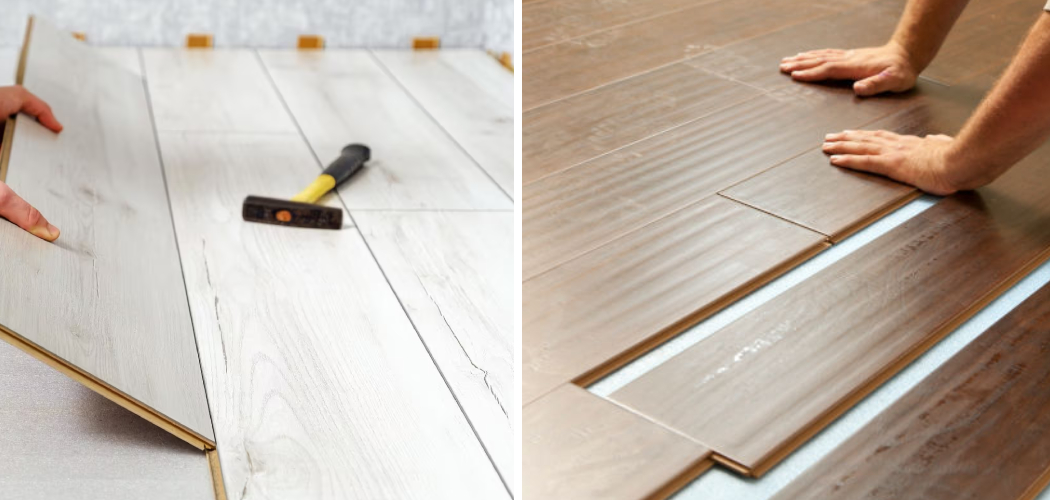Are the floors in your mobile home starting to look a bit worse for wear? From common issues such as squeaking and lifting planks, to more severe problems such as water damage or termites, there are plenty of reasons why your flooring may be falling apart. If you’re feeling overwhelmed by the idea of repairs and replacements, don’t panic!
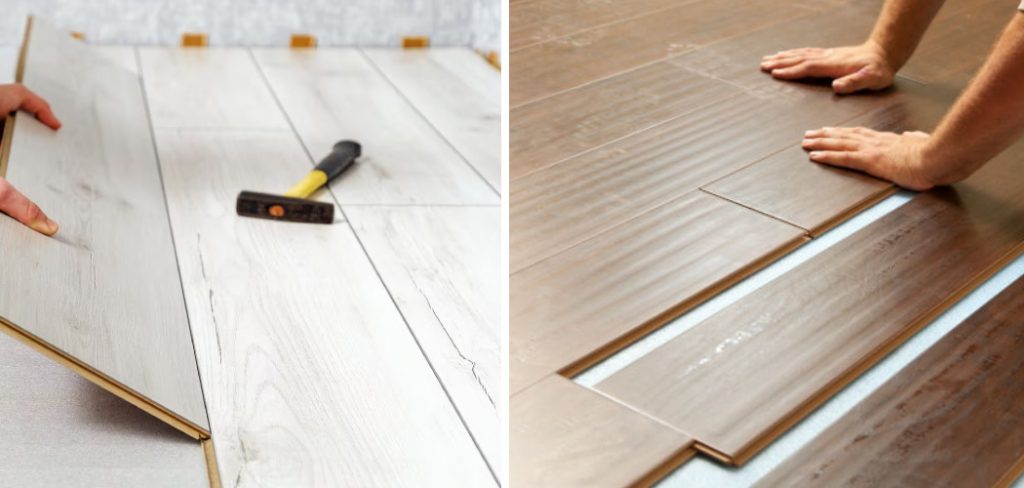
With some basic knowledge and expertise, it’s possible to fix any damaged areas or replace entire sections of flooring yourself – without having to spend a fortune on contractors. In this blog post, we will walk through all the steps necessary for how to fix floors in a mobile home.
Tools and Materials You Will Need to Fix Floors in a Mobile Home
- Hammer
- Nails
- Plywood
- Sandpaper
- Vacuum cleaner
- Protective gloves and eyewear
- Wood filler or putty knife
- Adhesive sealant
- Flooring of your choice (wood, tile, vinyl)
Step-by-Step Guidelines on How to Fix Floors in a Mobile Home
Step 1: Identify the Problem Areas
The first step when fixing floors in a mobile home is to identify which areas need repair or replacement. Be sure to thoroughly inspect the entire floor for any signs of water damage, lifting planks, squeaking noises, and other issues. Use a flashlight and magnifying glass to get a better look at the underlying issues. This will help you identify exactly which areas need to be fixed.
Step 2: Remove Damaged Flooring
Once you have identified the problem areas, it is time to start removing any damaged flooring. Use a hammer or pry bar to loosen the planks from their nails, being careful not to damage other nearby surfaces. If necessary, use a vacuum cleaner to get rid of any dust or debris. While removing the planks, it is important to wear protective gloves and eyewear.
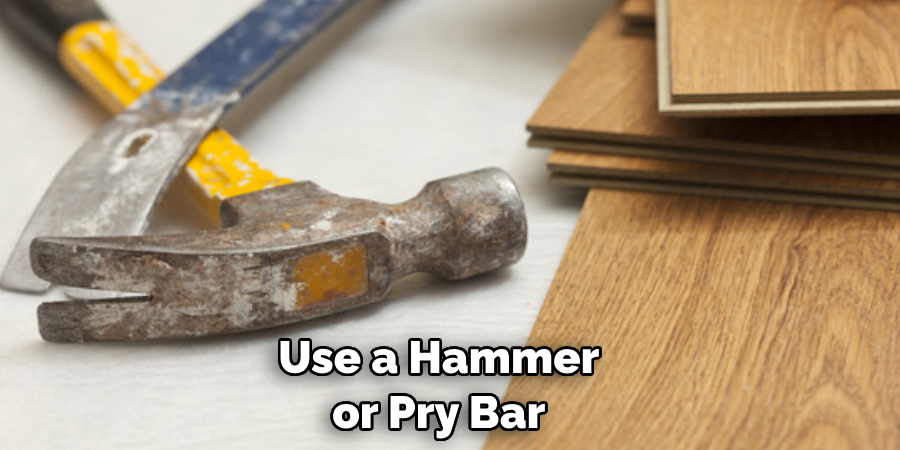
Step 3: Replace Damaged Flooring & Underlayment
Once the damaged flooring is removed, it is time to install new flooring of your choice (wood, tile, or vinyl). Before installing the new flooring, be sure to replace any old or damaged underlayment with a new layer of plywood. This will ensure that your flooring is protected from any moisture or debris which may seep through the cracks.
Step 4: Secure the New Flooring
To secure the new flooring, you will need to use nails as well as an adhesive sealant. Start by nailing down the planks one at a time and then use the sealant to fill in any gaps or cracks. If necessary, use sandpaper to smoothen out any uneven surfaces. In this step, you may also want to consider using wood filler or a putty knife to cover up any holes in the old flooring.
Step 5: Clean Up & Repair Any Smaller Issues
After you’ve secured the new flooring to the underlayment, it is time to clean up any leftover dust and debris. Use a vacuum cleaner to get rid of any small particles or use a damp cloth for bigger chunks. Once the area is cleaned, you can then check for any smaller issues such as loose nails, uneven surfaces, and so on. Make sure to repair or replace these parts before moving on to the next step.
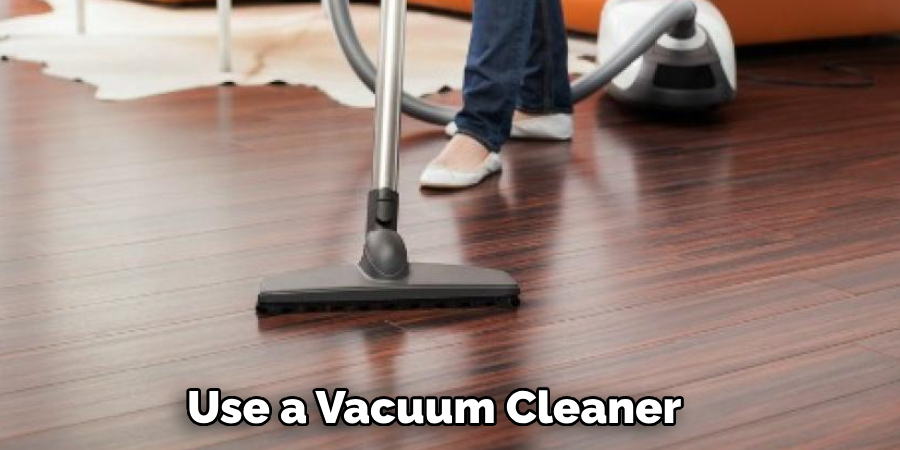
Step 6: Finish & Enjoy
Once all the repairs are completed and everything is cleaned up, you can then enjoy your freshly-repaired flooring. If you followed all the steps correctly, you should have a durable and long-lasting floor that will bring years of joy to your mobile home. Make sure to take extra care of your flooring and inspect it regularly for any signs of damage.
Following these steps should help you fix the floors in your mobile home with ease. Don’t forget to wear protective gloves and eyewear while dealing with all the tools and materials, as well as cleaning up afterward. With a bit of patience and hard work, you’ll be able to enjoy beautiful and sturdy flooring in no time! Good luck!
Additional Tips and Tricks to Fix Floors in a Mobile Home
1. Inspect the entire floor for weak or sagging spots, loose boards, and other structural issues. Make sure to take note of any damaged areas that may require more extensive repairs.
2. If it is just a few boards that need replacing, use a pry bar to remove them from the subflooring. Sand down any rough edges and make sure to use a level before reinstalling the new boards.
3. If the whole floor needs replacing, make sure to secure it properly with nails or screws and seal all of the seams between the boards.
4. Many mobile homes have jacks that are used to support and level them when they’re first set up. Make sure these jacks are still in place and functioning properly to help support the floor.
5. If you’re replacing the flooring materials, use plywood or other robust materials that can withstand the wear and tear of daily life.
6. To add insulation and reduce noise, consider using acoustic underlayment products for your new floors. This will also help keep your floors warm in the winter.
7. Consider adding a sealant or other protective coating to your new floors to ensure they stay looking good for many years to come.
8. When you’ve completed the repairs, make sure to inspect the entire floor from time to time for any further signs of damage and deterioration. Regular maintenance will help protect your floors and ensure they last as long as possible.
9. If you’re unable to complete the repairs yourself, consider hiring a professional contractor who specializes in mobile home flooring repair. They will be able to provide the highest quality of workmanship for your new floor.
10. Finally, remember to always be safe when completing any repairs or renovations on your mobile home. Wear the proper safety gear and make sure you follow all instructions carefully to avoid any potential damage or injury.
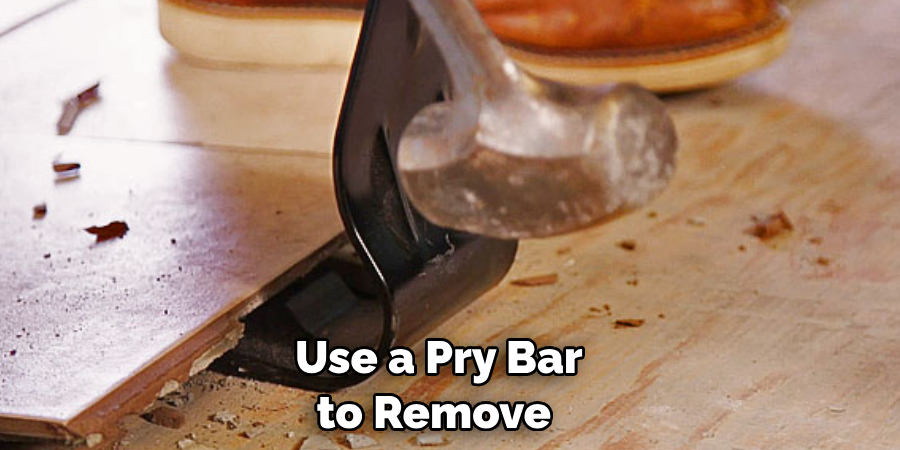
By following these tips and tricks, you should have no problem fixing the floors in your mobile home. With a bit of patience and effort, you’ll soon have a beautiful new floor that will last for years to come. Good luck!
Things You Should Consider to Fix Floors in a Mobile Home
- Take into account the age of your mobile home and any previous repairs that may have been done on the floor. If your mobile home is older, you may need to replace the entire floor or parts of it, depending on its condition.
- Research what type of floors were originally used in your mobile home and determine whether you want to replace them with the same type or upgrade to different flooring material.
- It is important to determine what condition the subfloor underneath your existing flooring is in. If you decide on installing new floors, this could require replacing parts of the subfloor first as well.
- Consider if your mobile home has any water damage that would need to be addressed before replacing or repairing floors.
- If you are purchasing new flooring, it is important to think about the durability and cost of the different materials available.
- Find out what type of tools and supplies you will need for your project, such as a drill, screws, nails, glue, etc.
- Choose a method for installing new floors that are best for your particular situation. You may need help from a professional if you are unsure of how to proceed.
- Make sure you have the right safety equipment, such as gloves and eye protection, to do the job safely and efficiently.
- Lastly, remember to take periodic breaks while working on your floors to avoid fatigue and ensure that you are doing the job correctly.
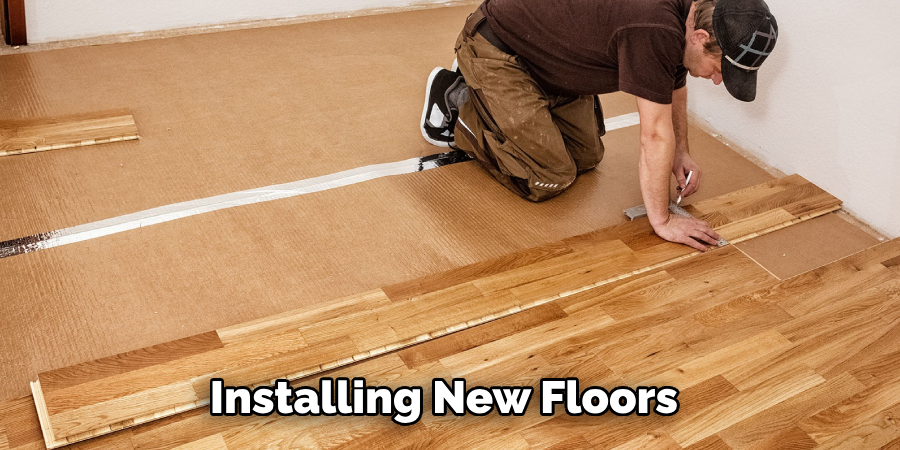
Following these considerations can help make your mobile home floor repair project run smoothly and effectively. Taking the time to consider what is needed for a successful repair will save you time and money in the long run. With careful planning, you can have beautiful new floors in no time!
Precautions Need to Follow for Fixing Floors in a Mobile Home
1. Make sure to turn off the power or gas supply before you start work. It’s important to ensure that all appliances are safely disconnected from their source of power or fuel and that any potential risk of fire is prevented.
2. Wear protective gear such as gloves, goggles, and a dust mask when removing old flooring materials like vinyl or linoleum. This will protect you from harmful particles and debris that might be present in the material.
3. Be careful not to damage any walls or other surfaces when prying up old flooring materials, as this could cause further damage to your mobile home.
4. If you’re replacing a section of the floor, make sure that it is securely fastened with screws or nails to the underlying floor joists.
5. Use an appropriate adhesive when laying down new flooring materials, such as vinyl, linoleum, carpeting, or tile. Make sure that you follow the manufacturer’s instructions for application and drying times.
6. If there is any water damage present in your mobile home, it is essential to repair it before laying down new flooring. This will help to prevent further damage and ensure that your floors last longer.
7. Be sure to inspect the area around your new flooring for any signs of gaps or cracks that may need to be filled for the new material to stick properly.
8. Be sure to clean the area thoroughly after installation, as dust and dirt can damage newly laid flooring. It is also important to wait until your new flooring has fully cured before furniture and appliances are returned to the home.
Following these precautions will help to ensure that your new mobile home flooring is installed properly and safely. With proper installation, your newly-fixed floors should last for years of comfortable living.
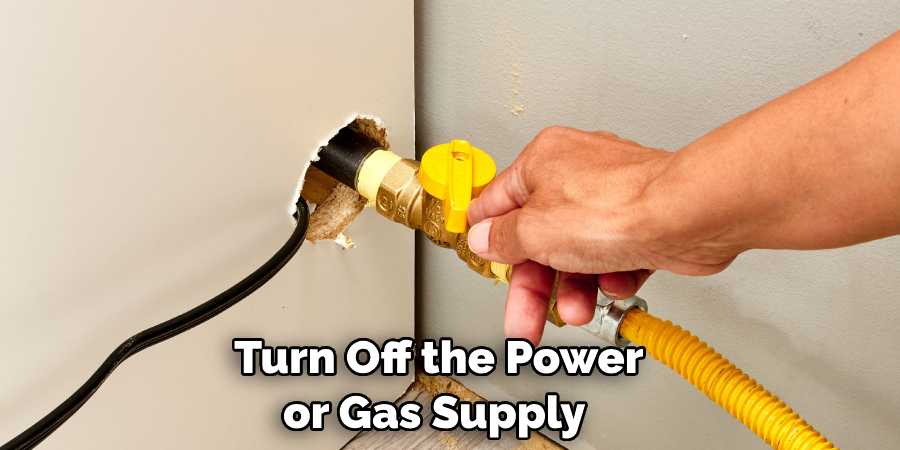
Frequently Asked Questions
Is It Difficult to Fix a Floor in a Mobile Home?
The difficulty depends on the type of flooring and the amount of damage. In general, simple repairs such as patching or replacing carpets can be done with relative ease, while more complicated projects like replacing wood floors or painting may require more knowledge and effort.
Do I Need Special Tools To Fix Floors in a Mobile Home?
In most cases, basic tools like a hammer, screwdriver, drill, and saw are enough to complete minor repairs. For more complicated projects such as replacing floors or painting, you may need to purchase additional tools such as a circular saw or power sander.
What Types of Materials Are Used to Fix Floors in a Mobile Home?
Depending on the type of repair, you may use different materials. For example, patching or replacing carpets requires carpets and padding while wood floors require plywood or hardwood. Additionally, painting may require primer, paint, and sealant.
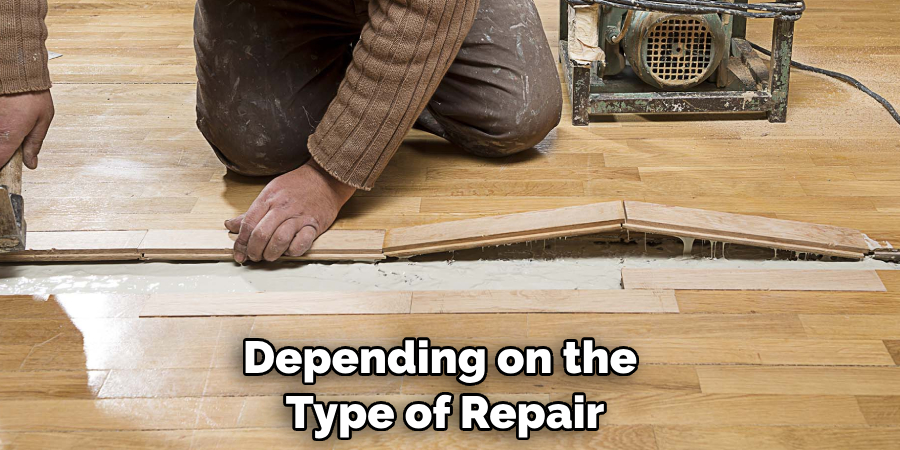
Is It Better To Hire a Professional to Fix the Floor in My Mobile Home?
Although it is possible to complete repairs yourself, it is often recommended to hire a professional for larger projects. Professionals have the skill and experience required to make sure the job is done correctly. Additionally, they may be able to source materials more easily than you can.
Conclusion
It is essential to know how to fix floors in a mobile home if you own or plan to buy one. This allows for any needed emergency repairs and extends the longevity of your flooring. Taking time for proper installation and maintenance can potentially save money and headaches down the road. Always check for water damage first as this could be causing other issues such as sagging, unevenness, and mold.
Be sure to take measurements accurately – using a carpenter’s square – for the boards before you cut them. Lastly, it’s important to work in small sections so that there aren’t any more major mobility issues than necessary when making repairs.
Given the advice of this blog post, any homeowner will have the confidence to make the necessary changes if their floor should become damaged over time or immediately after purchase. For any additional information on fixing floors in a mobile home, don’t hesitate to do research online or contact officials who specialize in mobile homes!
